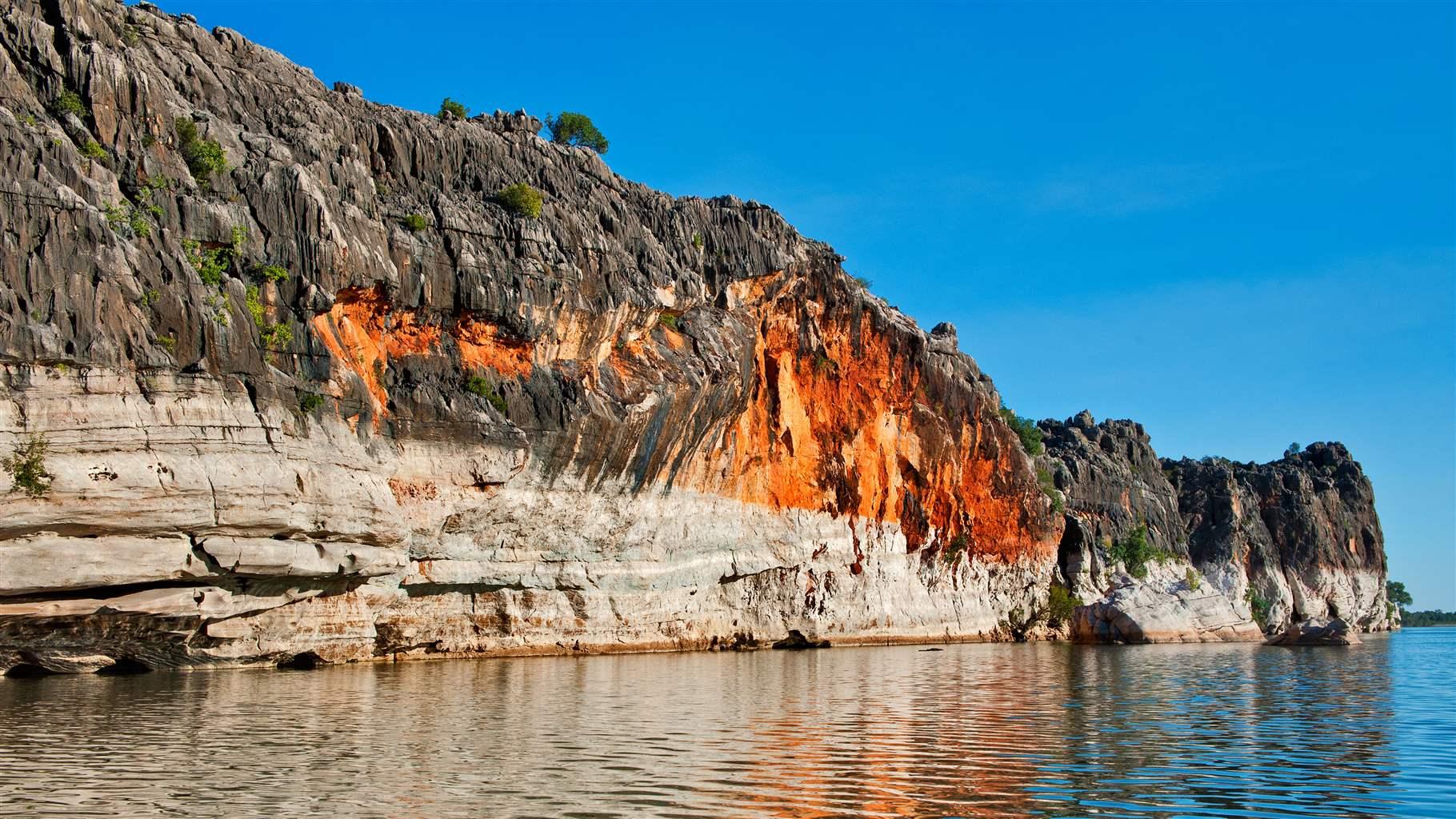‘Lifeblood’ of Western Australian Valley Faces Threat From Industrial Action
Protections for Martuwarra Fitzroy River will benefit Indigenous communities and wildlife

In the far north-west of Australia’s is one of the planet’s few remaining large free-flowing tropical rivers: the Martuwarra Fitzroy River. The Martuwarra is the ‘lifeblood’ of the Kimberley, a region that includes sandstone plateaus and 350 million-year-old Devonian limestone, through which the river has carved deep and dramatic gorges on its 455-mile journey to the Indian Ocean.
But this ecologically valuable river, which has been named an Aboriginal heritage site and listed as a National Heritage area, faces increasing pressure from industrialisation, large-scale irrigation projects and climate change. For more than two decades, Indigenous people in the Fitzroy Valley have worked to stop the threat of irrigated agriculture developments that would put the river’s future at risk.
A key breeding ground and nursery for the critically endangered freshwater sawfish, the Martuwarra river supports a range of fauna and flora, including 18 endemic fish species, as well as crocodiles, sharks, rays, turtles and waterbirds. The fluvial vegetation, such as pandanus and freshwater mangroves, provides important habitat for an array of wildlife and is a rich source of food and traditional medicines for communities in the region. Clean freshwater from the Martuwarra supports the coral reefs, mangrove forests, pearling beds and fish stocks along the Kimberley coast, which is considered one of the most intact tropical marine environments left on Earth.
Further, the river holds cultural, historical and spiritual significance for the Indigenous people who have lived along its banks for tens of thousands of years.
Numerous Indigenous groups—The Bunuba, Gooniyandi, Kija, Mangala, Ngarinyin, Nyikina, Walmajarri, Wangkatjungka, Warrwa and Western Jaru people—value the river for all that it provides and for the life it sustains. These groups feel obligated and honored to defend the Martuwarra’s right to flow freely. In 2016, Indigenous groups in the valley agreed to the Fitzroy River Declaration, the first agreement to recognize Traditional Indigenous cultural law and the rights of nature.
In fact, Indigenous Australians view the natural world (known as ‘Country’) as alive, vibrant, all-encompassing and fully connected in a vast web of dynamic, interdependent relationships. These connections among land, water, flora, fauna and people are kept intact and resilient through a strong philosophy of ethics, empathy and equity.
Anne Poelina, a Nyikina Warrwa Traditional Indigenous Custodian of the river, chairs the Martuwarra Fitzroy River Council, which formed in 2018 after growing concerns about water extraction proposals for the Fitzroy River. Poelina says it’s her duty to care for the Martuwarra, the river’s original and enduring name: “Martuwarra is a living, ancestral being. It has a right to life, to live and to flow. We live by an obligatory law to protect the ‘River of Life’. It is the essence of our spirituality, identity, culture and law.”
The Pew Charitable Trusts has been working alongside Indigenous groups, scientists, stakeholders, and local communities for many years, calling for the Western Australian Government to protect the Martuwarra and to create sustainable development by supporting enterprises founded on the region’s natural assets and Indigenous culture.
In 2017, the Western Australian Government committed to protect the river and ensure sustainable development. However, in 2020, a government discussion paper on water use in the Martuwarra catchment revealed proposals to extract up to 300 billion litres of river water for large-scale irrigation development. This was met with widespread resistance from Traditional Custodians and the broader community throughout Australia, with 43,000 public submissions opposing the proposal and calling for the river to be protected.
Taking surface water at such a large scale could result in both ecological and social impacts for the Fitzroy Valley, disrupting the flow of the river and the native species that rely on it.
Indigenous groups have repeatedly called on the Western Australian Government to ensure that Traditional Owners are central in all decision-making processes concerning management of the Martuwarra and have emphasized the need to protect the river—for the people, natural landscapes and wildlife that rely on it. The Western Australian Government must recognise the Martuwarra’s inherent cultural and spiritual value and ensure that this region’s lifeblood can continue to support everything and everyone who depend on it, including Indigenous Australians.
Monique Barker coordinates work with Indigenous partners in Western Australia for The Pew Charitable Trusts’ Outback to oceans Australia project.








